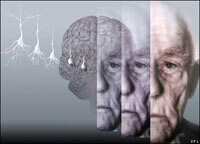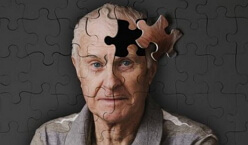Suicidal behavior: causes and prevention

People at different times treated suicide ambiguously. Some people in certain periods considered suicide the norm. For example, suicide was approved in Greco-Roman culture and Ancient India. The Japanese suicide from time immemorial was a holy ritual( hara-kiri, biting off the tongue).Islamic culture, on the contrary, always condemned suicides.
The Christian world, too, was not always negative about the act of suicide. Some theologians who admit suicide as a sin still favor it for certain cases( for example, for Holocaust victims or prisoners of war).
Factors of suicidal behavior
There are several factors that affect suicidal behavior of a person:
- Past suicide attempts. According to statistics, for each completed act of suicide, there are 20 to 100 suicidal attempts. Therefore, one should take seriously any attempt at suicide.
- Suicide threats. The assumption that "a person who talks about suicide will never commit it" is false and dangerous.
- Situational moments: serious health problems, material unhappiness, death of loved ones, divorce.
- In-family problems( "Scapegoat").
- Mental and emotional disorders: depressive conditions, alcohol or drug abuse, schizophrenia, etc.
- "Werther effect", when the frequency of suicide rises in a limited area, due to the imitation of suicidal behavior of people.
Features of the behavior of suicides
Suicidal behavior is always politically motivated, which suggests a certain hierarchy of motives for a suicide. The system of motives for a suicide is always dynamic. In it there is a constant struggle of causes with unpredictable consequences. The role of a kind of detonator that pushes to commit suicide can be played by an event in the process of this struggle of motives.
All people at the time of suicide are characterized by social and psychological disadaptation. Their self-esteem and the price of their own lives are reduced, life values are lost, and normal contacts with surrounding people are violated.
It is possible to distinguish common features inherent in all suicides.
- All suicides have a common goal - is to find a solution. Suicide is never accidental and meaningless. He is an attempt to overcome the crisis. For a proper understanding of the causes of suicide, you need to understand the problems that he is called upon to solve.
- The task of suicide is the cessation of consciousness. A person tries to lose consciousness in order to get out of the impasse.
- Suicide is always designed to stop the unbearable mental anguish of a person. The suicide attempts to free itself from mental suffering.
- Common stressors of all suicides are unsatisfied( frustrated) psychological needs. Suicide can not be called an unreasonable step. A person who commits suicide considers his act logical. Suicide is always a kind of reaction to the inability to satisfy one's needs. That is, if a person's needs are met, suicide will not occur. There are a lot of senseless deaths in the world, but there are no groundless suicides.
- The suicidal emotions inherent in all suicides are helplessness and despair. Consciousness of a suicidal person creates an emotion, such as "I can not do anything except suicide, in order to alleviate the suffering that I experience."
- The internal relation to a suicide is ambivalent. In other words, a person simultaneously tries to die, and calls for help to live.
- All suicidents inherent narrowing of the mental sphere. Their consciousness becomes "tunneled".The wide choice of behavior that is available to the consciousness of a "healthy" person, the suicide is severely limited. Resolution of the situation, he sees either unexpected( almost fabulous), or in the cessation of consciousness. At the same time, such personal support systems as close or authoritative people are not so much rejected by a person as simply do not fit into a system of narrowed consciousness. The real help to a suicide can be rendered by broadening the options for solving the problem.
- Escape is a common action inherent in any suicide. Man tries to leave the disaster zone by his act. The varieties of this behavior include dismissal from work, leaving home, desertion. Ending the problem forever is the main reason for suicide.
- Communicative act in any suicide is informing about the desire to leave their life. Psychiatrists claim that any person who stands on the verge of suicide, unconsciously or consciously signals a problem: speaks of his own helplessness, calls for help, seeks ways to salvation. It is a pity that these messages are not always understood.
- The general pattern of any suicide is a correspondence to a certain style of life behavior. Any suicidal act is the planned end of previous events. This conclusion led to an analysis of the characters of suicides, the style of their life, their state of mind. Thus, the conclusion suggests that suicide can always be prevented by conducting prevention long before the commencement of suicide.
Types of suicidal behavior
Scientists identify several types of suicidal behavior that depend on the cause of suicide.
- Protest. Such suicidal behavior is intended to inflict damage or revenge on the offender. It is inherent most often to men of 18-30 years, and happens, basically, in the form of public self-cuts.80% of such cases are committed in alcoholic intoxication.
- Call. The meaning of suicide is to try to get outside help to change the existing situation. It is more common in women, but in men it is not uncommon. The act of suicide usually happens in the evening hours, by self-poisoning. Such suicidal behavior is inherent in infantile personalities, vivid egocentric people and emotionally unstable people.
- Avoidance. It appears in cases of threat to be punished. The suicide attempts to avoid physical and mental suffering, which will be the result of punishment. Most often it is inherent in older people, usually disabled, divorced, widowed, etc.
- Self-punishment. This type is determined by strong feelings of guilt. It is characteristic of married women with high education and social status.
- Failure of life. The purpose and motives of suicide exactly coincide: "I'm dying, in order to die."Having inherited people who have lost the meaning of their existence. Characteristic of mature men over 40, as well as people with mental disabilities.
- The stage of suicidal tendencies. Trends in suicide are signs that indicate a loss of sense of existence and a reluctance to live. Some thoughts, threats and feelings appear in the person's thoughts. A person starts planning his own suicide, chooses the time and the way, looks for the place of commission of the act. At this stage it is important to carry out prevention, which consists in educating people that any suicide is not a sign of insanity, and any suicide can be recognized and assisted in advance.
- Stage of suicidal actions. This stage begins when the suicidal tendencies turn into real actions. At this stage, the main help is to keep the suicide from suicide, and not to change his personality. If suicide was avoided at this stage, then such suicide actions are called a suicidal attempt.
- The stage of post suicide crisis continues from the moment of committing a suicide attempt to the complete disappearance of suicidal tendencies. The main assistance here is aimed at overcoming the mental crisis of both the suicidal person and his close people. Prevention of repeated suicidal cases is also important.
Suicide prevention
There are many methods of suicide prevention: professional psychological help, "hotlines", emergency medical care, etc.
The main directions of such assistance are:
- diagnosis of suicidal tendencies;
- timely visit to the suicide specialist;
- emergency assistance at the time of the act of suicide, aimed at preventing a person from committing suicide. It can be both physical( just dragged from the window), and psychological.
If physically there are no ways to prevent a person from committing suicide or a person is only talking about the intention to commit suicide, you should try to stop him by talking to him. Find out if the time, place and method of suicide are chosen. What kind of result does the suicidal want to achieve by attempting to leave life. Tell the person what will be the reaction of his loved ones, what are the consequences of the actions being committed, what will happen in a couple of years after the suicide.
Any suicidal act has a huge psychological impact on all people involved in it. The suicidal family, his friends and the attending physician experience a sense of guilt for not preventing suicide. It is very important to provide meaningful psychological support to the deceased's close people, aimed at overcoming feelings of guilt and regret.



